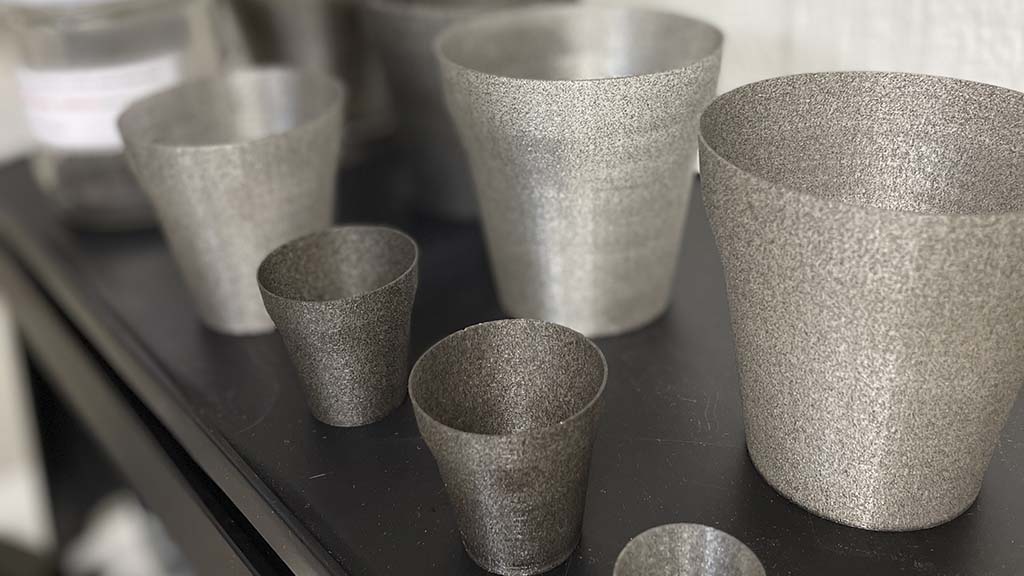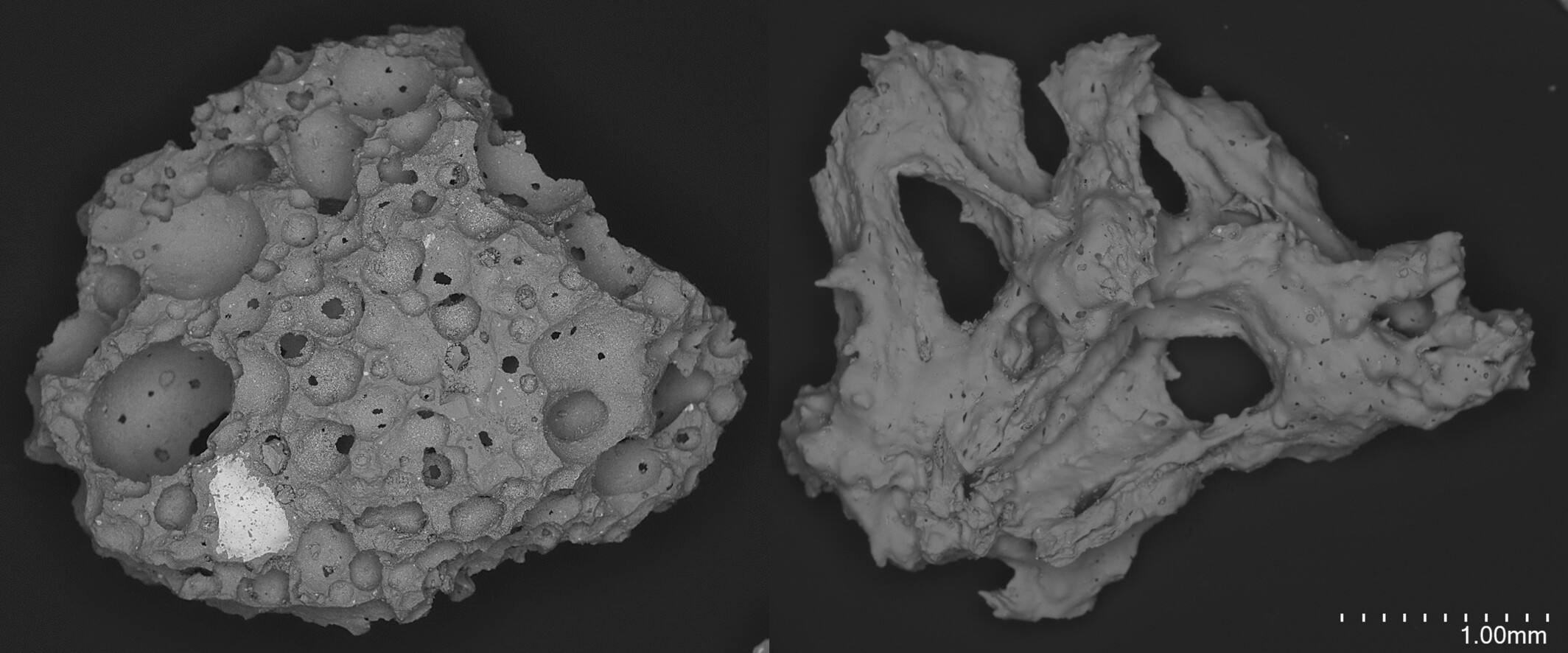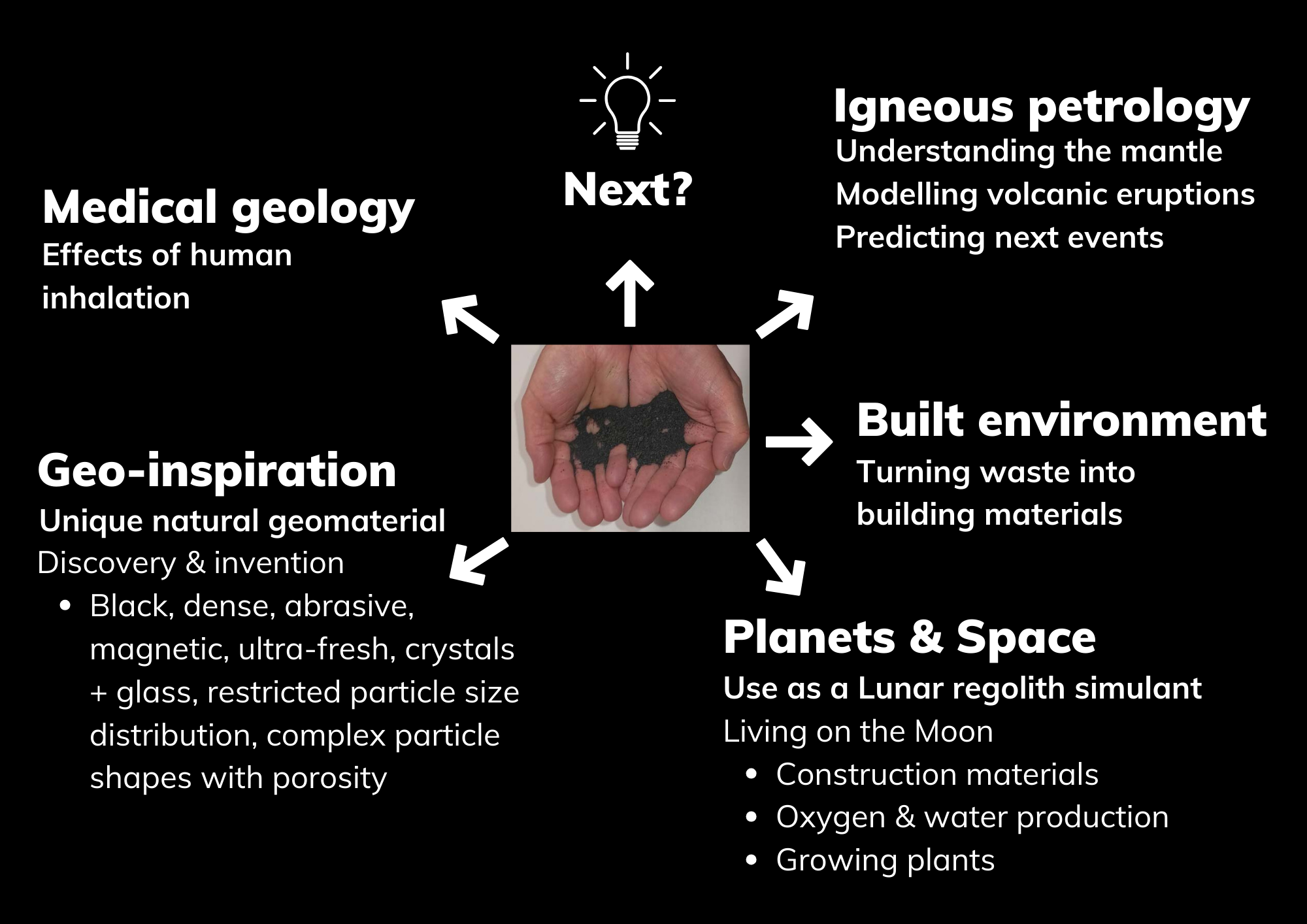Volcanic Ash Is Similar to the Moon Soil (Regolith) – What Does It Mean for Science and Innovations?
Volcanic ash is often considered to be a liability for the area over which it is spread. The La Palma eruptions in 2021 prompted GTK researchers to think of imaginative and innovative solutions for using volcanic ash for beneficial purposes.

Traditionally, volcanic ash has been used in scientific investigations to understand the nature of the Earth’s mantle or model volcanic eruptions, or even predict future ones. The ash can be used in the construction industry as well as a fertilizer for plants. Also, the impact of inhaling volcanic dust on human health has been studied previously.
What else we could do with it?
The first thing was to characterise the ash. The researchers discovered that the ash was an extremely complicated geomaterial. It is made up of mixtures of crystalline rock fragments (lava) and glassy particles (assumed to have been lava that quenched after eruption), all of varying size, although a distinct unimodal particle size distribution was evident (Figure here), with most particles being in the minus 0.4–0.063 mm fractions. Some particles exhibited extraordinary textural complexity (Figure below) suggesting that the processes which led to their formation are well preserved despite their violent history.

The researchers found out that the average grain size of the La Palma ash was similar to that of the Moon soil, which constitutes the top layer (a few meters thick) of the lunar surface, termed regolith. Besides, the basaltic composition of the La Palma ash bears a close chemical resemblance to the Moon soil found in the mare regions of the Moon (the dark areas of the Moon that are visible to an unaided eye of an observer on the Earth). Thus, arose the question of the possibility of using La Palma ash as a terrestrial analogue of the Moon’s regolith. After consulting the literature and seeking the expertise of our collaborators from the Open University (Mahesh Anand and Richard Windmill) who are involved in studying the actual Moon soil, researchers could answer yes to the question. They embarked on a series of experiments using the La Palma ash one of which included growing salad leaves in ash-compost mixes.
The ash contains very fresh, mantle-derived minerals (amphibole, magnetite, olivine, clinopyroxene), which, if separated and concentrated, could form the basis for optimizing experimental ideas already known on how best to extract water and oxygen from minerals, and that could be employed on the Moon one day. The ash has many interesting and useful properties (it is black in colour, relatively dense, weakly magnetic, composed of glass and crystals, and contains many particles that are micro-porous and abrasive), which makes it a useful natural geomaterial on which to make new discoveries and inventions, in the spirit of geo-inspiration theory and practice.

More information
This text is based on open access article published July 28, 2023 on Geology Today:
Volcanic ash as a resource for future research on Earth and the Moon
by Alan R. Butcher, Richard Windmill, Ian J. Corfe, Sungwoo Lim, Ester M. Jolis, Sari Lukkari, Matt J. Pankhurst, Olivia A. Barbee, Beverley C. Coldwell, Nemesio Perez Rodriguez, Lee F. White, Alice Dunford and Mahesh Anand.
Alan Butcher, Research Professor
Geological Survey of Finland GTK
alan.butcher@gtk.fi
You might be interested in these stories
Geology Plays an Important Role in Space
GTK is Helping Space Researchers Make Living on the Moon a Reality
